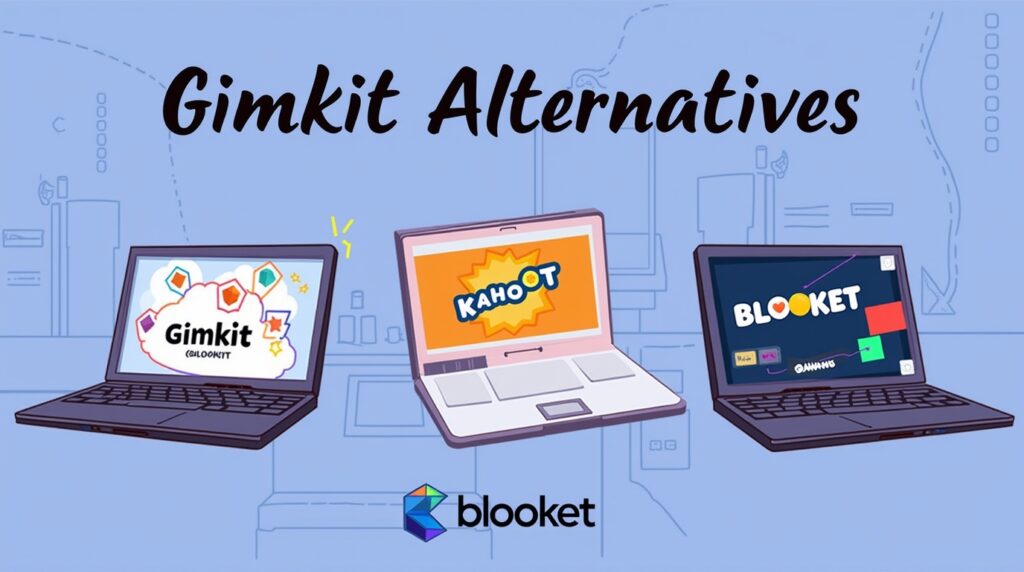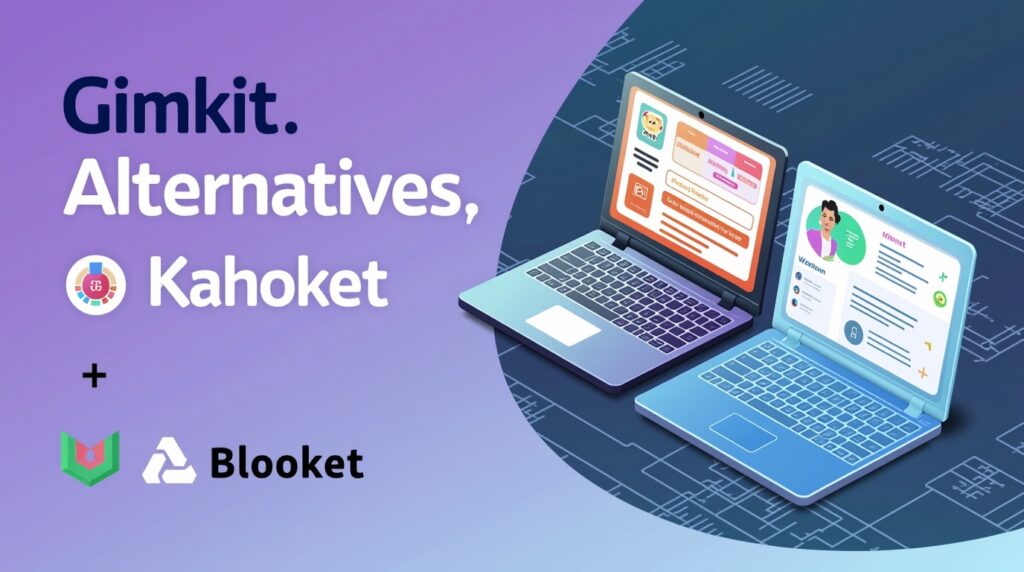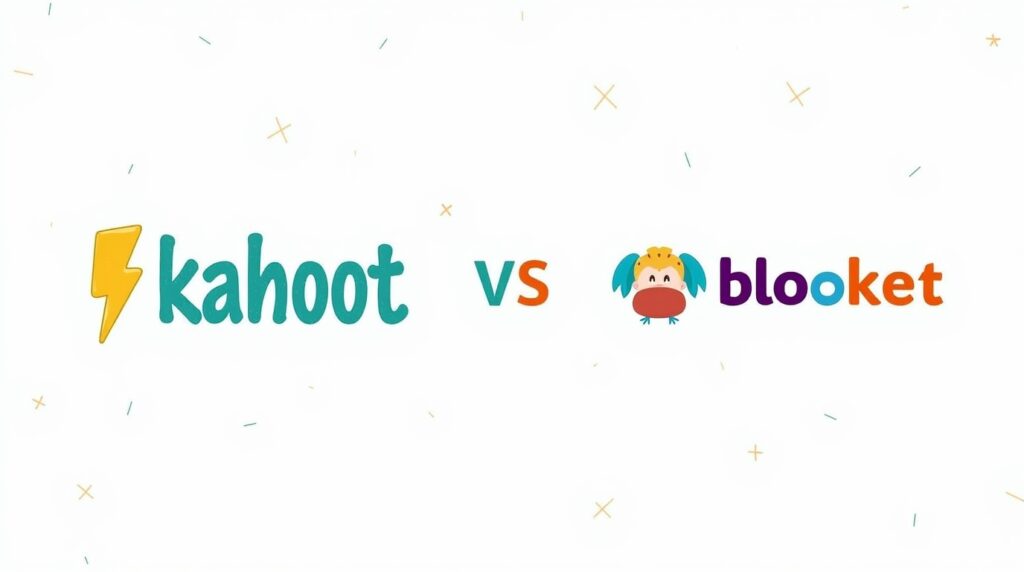In contemporary classrooms, interactive online technologies have changed the way students learn (particularly those with special needs such as autism). One of those popular websites, Gimkit, is not likely to fit the style of every learner. Autism students will tend to thrive in a learning environment that is structured, predictable and with clear instructions. Looking at Gimkit alternatives enables teachers to identify platforms that better reflect such needs. This blog highlights the essence of two interesting options, Kahoot and Blooket, which can help learning immensely since they offer flexible, interactive, and sensory-sensitive conditions to students with ASD.

Why Explore Gimkit Alternatives?
Even though Gimkit alternatives presents an interactive, game-style quiz that encourages many learners, it can become overwhelming to some students with autism because it is rapid and competitive. There are cases of distraction or sensor overload through its interface and sound effects.
Moreover, stressing competition is not always favourable to every student. Alternatives may be more controllable in time and less in sensory features, and more adaptable concerning an individual’s learning requirements. Selecting the right tool can mean the world of engagement and understanding to students with the autism spectrum.
Understanding Autism and Learning Preferences
The students with autism tend to process data in a different way, and they are happy with structure, routine, and repetition. They might have sensory sensitivity or social anxiety; hence, learning resources must avoid distractions and be able to practice daily and steadily. Having visual aids and consistent rules that are easy to predict makes them feel relaxed and concentrated.
Technology that is in scale with these necessities assists these needs in the ways of communication, socialisation, and academic development. It is vital to identify such individual styles of learning to determine the variety of educational platforms in the classroom so as to have a successful and diverse classroom.

Kahoot: Interactive Learning Made Accessible
Kahoot is a world-renowned gamified learning environment in which students study by solving quizzes based on clear graphics and easy multiple-choice tasks. It is easy to use and enables educators to create quizzes, set pace and offer instant feedback. Other attributes that promote the use of Kahoot by autistic learners are that it offers clear tasks that are structured.
The timing and difficulty of the questions may be adapted to the personality of individuals or groups by the teachers so that the dynamic of anxiety can be kept to a minimum. Team modes in the platform, as a possibility of social engagement, also promote a collaborative learning process in a non-threatening atmosphere and do not result in a sensory blitz.
How Kahoot Benefits Students with Autism?
The versatility of Kahoot also enables teachers to prepare sensory-friendly learning by avoiding excessive sound effects and choosing simple themes. Its presentation style is pictorial, which gives coherent hints that facilitate meaning. Students with learning setbacks are taken care of as the teachers direct the pace; they can stall in between questions.
History will be kind to me for I intend to write it. You can never get a cup of tea large enough or a book long enough to suit me. Our lives begin to end the day we become silent about things that matter.
The instant gratification leads to confidence and strengthens learning. It promotes social interaction at a low stress level through play as a team or participation in a classroom. This ease of stimulation and control is what makes Kahoot a good fit for autistic learners, who want to be engaged without being overstimulated.

Blooket: A Versatile, Engaging Platform
Blooket is a program that provides learning quizzes with multiple variations of gameplay types helping students approach the materials at various rates and forms. The Blooket platform has more variety to offer compared to the exclusively speed-oriented platforms, which is why it has both fast-paced trivia-type games and a slower game selection that requires strategy.
It has a colourful and yet not cluttered interface that minimises unwarranted sensory input, thus it can be utilised by students with autism. The unlocking features and the reward system are beneficial on the part of the platform. Blooket encourages adaptive and fun learning since it allows teachers to choose suitable games according to the needs of their students.
Why Blooket is Effective for Students on the Spectrum
The type of games available in Blooket serves learners with diverse learning styles and preferences, which is essential to students with autism. To give an example, Tower Defence mode represents a relaxing and planning game, and Cafe mode stimulates turn-taking and social interaction.
They are predictable due to the rules and visual response, which encourage learning and reduce frustrations. Students can develop their skills slowly since they can practise using the platform multiple times. These features make Blooket a good substitution for teachers looking to generate inclusive learning settings that are encouraging to students with autism.

Key Features to Consider in Alternative Platforms
In the consideration of alternatives to Gimkit, one needs to focus on the choice of educational platforms that would accommodate student preferences with ASD. The best characteristics are:
- Adaptable tone of pace and difficulty.
- Easy, non-crowded interfaces.
- Visual and auditory stimers that facilitate understanding.
- Repeat and review choices to help learning.
- Positive reinforcement with incentives in the form of points, badges or rewards.
- Social ways which could involve group work, promoting safe interaction.
The above will assist in making sure that technology does not act as a deterrent to learning for autistic students.
Best Practices for Using Gamified Tools with Autism
Implementation of new Gimkit alternatives platforms should be done with consideration in order to makes as much advantage to students with autism. Begin with slower, scripted introductions in order to slowly get students acquainted with the workings of the game. Provide practice and give more opportunities to play. Combine the technology with a visual schedule as well as clear verbal instructions.
Change the settings to minimize the effects on the senses, e.g. shutting down the sound or de-cluttering the visual display. Observes student reaction and customizes the experience according to needs. The use of gamified tools in addition to other support, such as sensory breaks or peer mentoring, improves learning results.

Comparison Table Between Gimkit, Blooket and Kahoot

| Feature | Gimkit | Blooket | Kahoot |
|---|---|---|---|
| What it is | Quiz game where you earn money | Game with different fun modes | Quiz game with fast questions |
| How you play | Answer questions and buy upgrades | Play many types of games with questions | Answer questions quickly to compete |
| Make your own | Yes, you can make quizzes | Yes, you can make quizzes | Yes, you can make quizzes |
| Where to play | On computer or phone | On computer or phone | On computer or phone or app |
| Free or paid | Free with some limits, paid for more | Free with some limits, paid for more | Free with some limits, paid for more |
| Reports | Shows how well players did | Basic results | Detailed reports |
| Fun features | Earn money, buy upgrades | Different game styles | Music and leaderboards |
| Good for | Classes that like games with strategy | Kids who like many game types | Quick and fun quizzes for all ages |
Conclusion
The selection of a proper Gimkit alternatives gamified learning platform can make the learning process of students with autism much better. Other tools like Kahoot and Blooket create engaging and adaptive, as well as sensory-friendly learning environments that satisfy various learning needs of students. When teachers innovatively combine these platforms in their instruction, they will make their classrooms more inclusive and allow all their students to succeed, feel confident, and enjoy the learning process.
Frequently asked questions (FAQs)
1. Why is Kahoot appropriate in students with autism?
Kahoot enables the management of the speed of the game, the visual representation it has, and the easy interfaces to keep the senses in check and allow a controlled form of learning.
2. How does Blooket meet various learning requirements?
Blooket has various game types that have different speeds and interaction styles, and the teacher can choose such a format that the students would respond to according to their senses and cognitive levels.
3. Are such sites adaptable to individual students?
Indeed, Kahoot and Blooket allow a teacher to develop individual quizzes and customize such options as time to answer questions or their complexity.
4. Are such tools suitable to younger kids?
Absolutely. The two platforms offer the variety of contents that are more or less age-related and can be devised to fit in with the levels of developments.
5. What can be done to reduce the range of sensory overloads in the game?
Instructors can minimize a sound, employ more basic topics, manage speed of the game, and provide some kind of breaks to produce a soothing learning environment.
6. Are such platforms supposed to foster social interaction?
Yes, such features as the mode of team play and cooperation help develop social skills in a safe and non-pressure environment.

